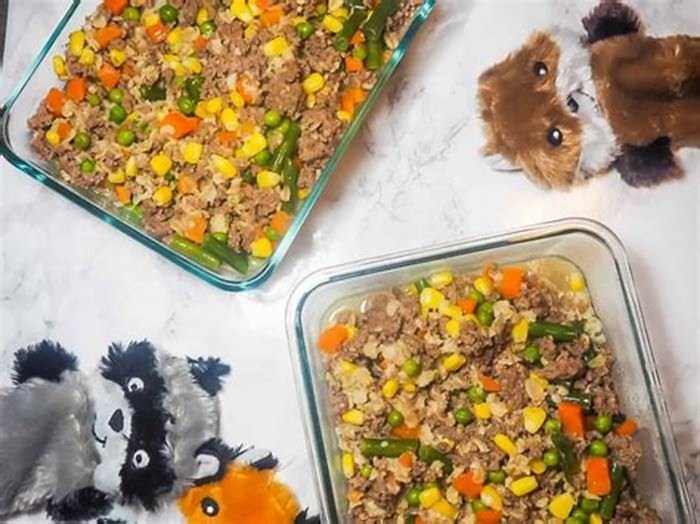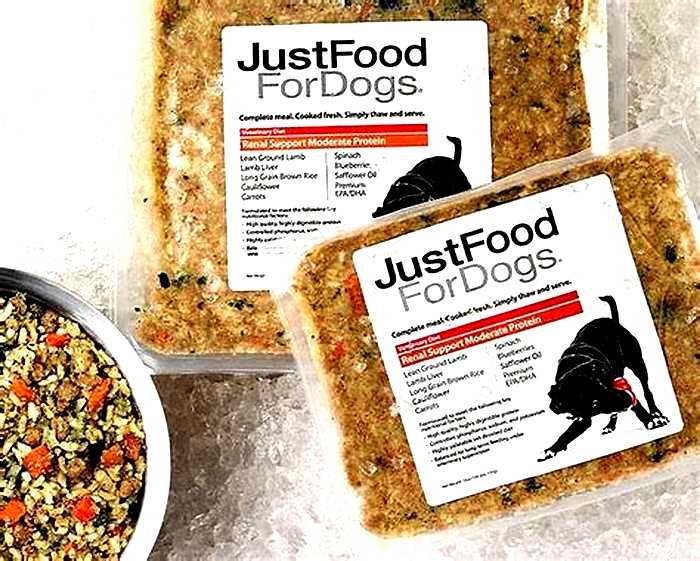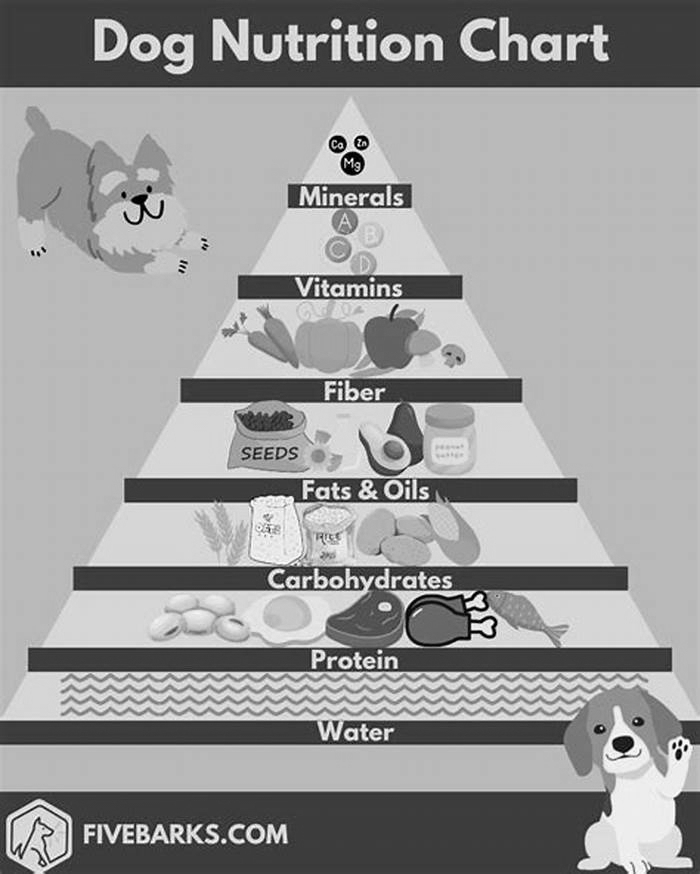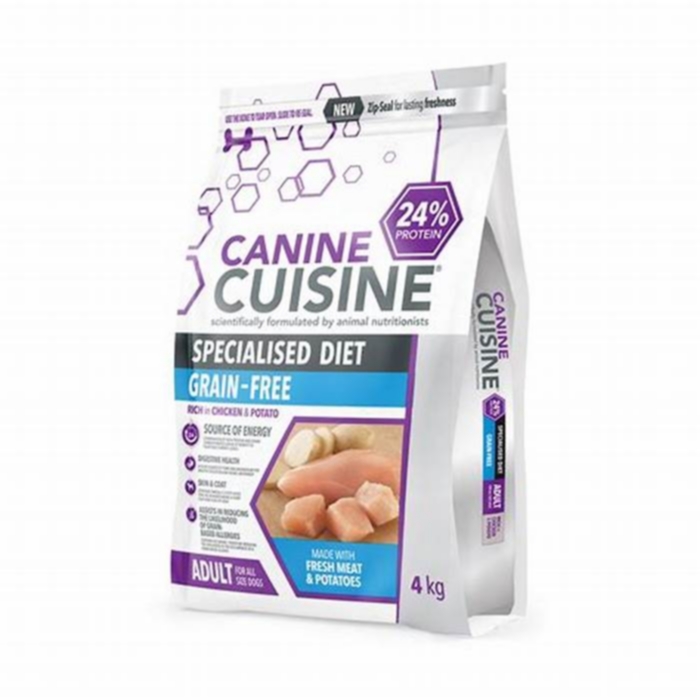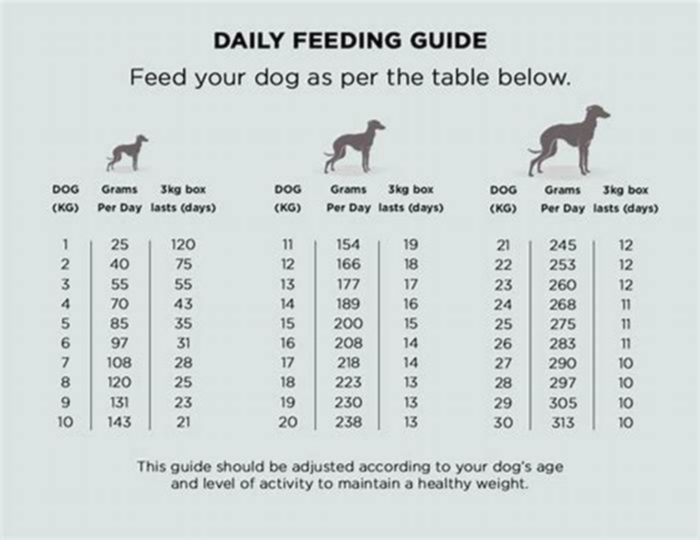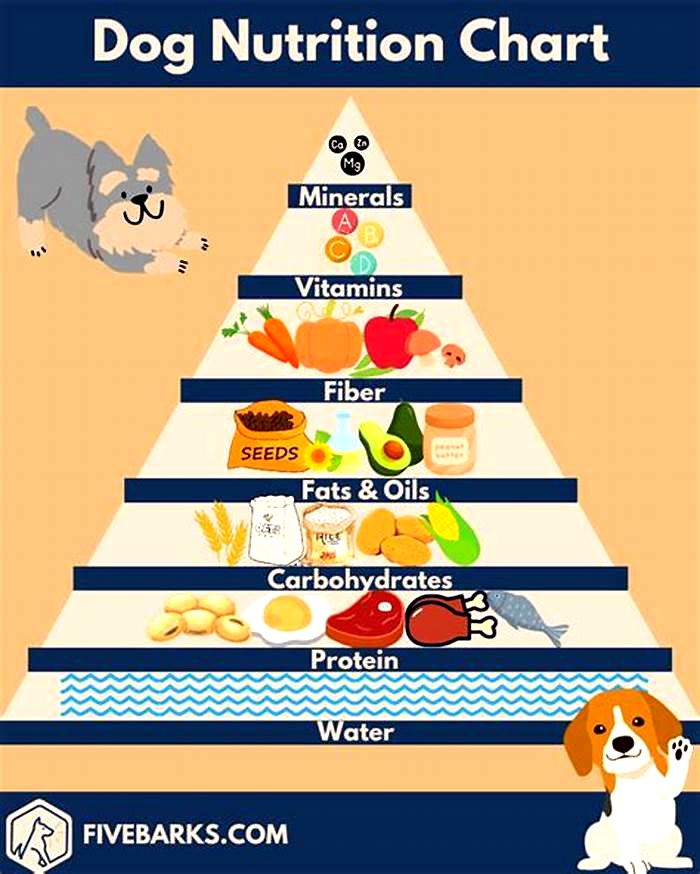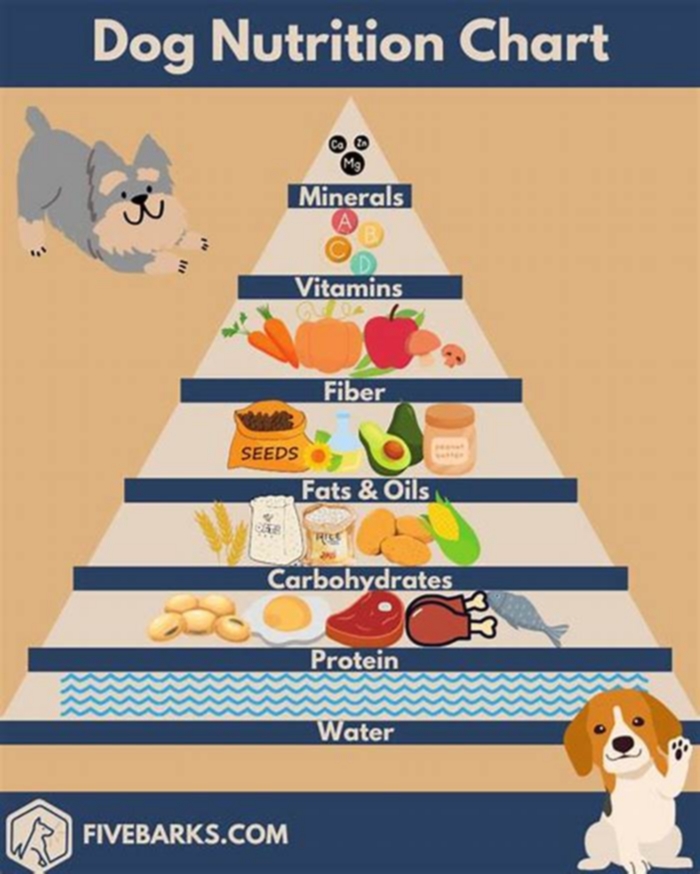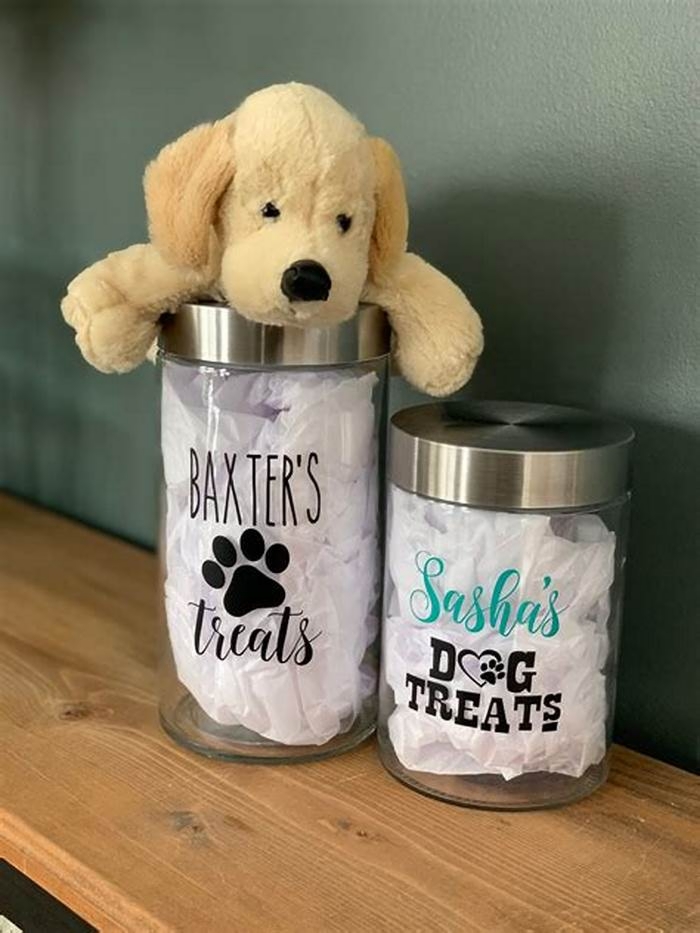Customized Canine Cuisine Crafting Diets to Meet Your Pet s Unique Requirements

Crafting Canine Cuisine: A Guide to Homemade Dog Food Diets
Crafting Canine Cuisine: A Guide to Homemade Dog Food Diets
Embarking on the journey of preparing homemade meals for your dog is a rewarding endeavor that allows you to have greater control over their nutrition. In this blog post, we'll explore the art of crafting a well-balanced homemade dog food diet, ensuring your furry friend receives the essential nutrients they need for optimal health and vitality.1. Choosing the Right IngredientsSelecting the right ingredients is paramount when preparing homemade dog food. Opt for high-quality proteins like lean meats, eggs, and fish. Include a variety of vegetables for essential vitamins and minerals, and choose healthy fats such as fish oil or olive oil.2. Balanced MacronutrientsAchieving a balance of macronutrientsproteins, fats, and carbohydratesis key. Proteins should make up a significant portion of the diet, while healthy fats contribute to coat health and overall well-being. Carbohydrates, sourced from vegetables and grains, provide energy.3. Essential Vitamins and MineralsEnsure your homemade dog food recipe includes a variety of fruits and vegetables to provide essential vitamins and minerals. Consider ingredients like sweet potatoes, blueberries, and leafy greens to boost nutritional content.4. Calcium and Phosphorus RatiosMaintaining the correct ratio of calcium to phosphorus is crucial for bone health. Include ingredients like dairy, bone meal, or supplements to achieve the appropriate balance. Consult your vet for guidance on the specific needs of your dog.5. Incorporating SupplementsWhile a well-rounded diet should meet most nutritional needs, certain dogs may benefit from supplements. Omega-3 fatty acids, glucosamine, and chondroitin are commonly used to support joint health, especially in older dogs or those prone to joint issues.6. Rotation and VarietyIntroduce variety into your dog's diet by rotating protein sources and incorporating different vegetables. This not only ensures a diverse nutrient profile but also prevents your dog from developing aversions to specific foods.7. Portion Control and MonitoringHomemade diets require careful portion control to prevent overfeeding or underfeeding. Monitor your dog's weight and adjust portions accordingly. Regular veterinary check-ups can provide insights into your dog's overall health and dietary needs.8. Transitioning GraduallyWhen transitioning to a homemade diet, do so gradually to avoid digestive upset. Slowly introduce the new food while monitoring your dog's response. Any sudden changes in behavior or digestion should be addressed promptly.ConclusionCrafting a homemade dog food diet is a labor of love that requires careful consideration of your dog's nutritional needs. By selecting high-quality ingredients, balancing macronutrients, incorporating essential vitamins and minerals, and monitoring your dog's response, you're providing them with a wholesome and nutritious diet. Remember, consult with your veterinarian to tailor the diet to your dog's specific needs and enjoy the satisfaction of nourishing your furry friend from the kitchen to the bowl.
Bowl to soul: this company delivers fresh, customized canine cuisine right to your door
Have you ever stood in the pet food aisle, overwhelmed by the endless options, yet feeling like none of them truly meet your dog's needs? You're not alone. The quest for the right dog food can be daunting, especially when aiming for a blend of nutrition, taste, and health benefits. Luckily, theres PetPlate, a trailblazer in transforming dog diets with a difference you can see and your dog can taste.PetPlate doesnt just make dog food; they create customized, fresh, and nutritious meals tailored to your dog's unique dietary requirements and preferences. Imagine the relief of ditching the guesswork, knowing each meal is expertly crafted to support your dog's health and happiness. And the cherry on top? This culinary delight for your canine companion is delivered conveniently to your doorstep. With PetPlate, you're not just feeding your dog; you're nurturing their well-being, meal by meal.
The PetPlate Difference: Quality and Customization
The phrase "you are what you eat" holds just as true for our four-legged friends as it does for us. That's where PetPlate steps in, turning the ordinary into the extraordinary. Every meal from PetPlate is a testament to quality, crafted from human-grade ingredients the kind youd find on your plate. We're talking real meat, fresh vegetables, and wholesome grains, all combined to create nutritionally balanced meals for which any dog would wag their tail.
But PetPlate doesnt just stop at quality ingredients; they elevate mealtime with customization that speaks to your dog's individuality. Whether its a pup with a sensitive stomach or an older dog needing joint support, PetPlate tailors each meal to fit your dog's specific dietary needs and preferences. This personalized approach ensures that your furry family member isn't just eating - they're thriving. It's like having a personal chef for your dog who knows just what they need for their health and happiness.
At the core of PetPlate's philosophy is a commitment to not just feed but to nourish. This is where their team of veterinary nutritionists comes into play, turning each meal into a powerhouse of health. These aren't just random recipes; they're carefully crafted diets designed with a vet's expertise to ensure your dog gets the right balance of proteins, fats, vitamins, and minerals. Whether supporting a shiny coat, boosting energy levels, or maintaining a healthy weight, PetPlate's meals are tailored to address a wide range of canine health needs.
This meticulous attention to nutritional detail means you provide more than just food. You're offering a foundation for long-term health and vitality, specifically molded to the unique requirements of your beloved pet. It's not just about filling a bowl; it's about fulfilling a commitment to your dog's well-being.
Convenience
In todays fast-paced world where convenience is king, PetPlate reigns supreme. Imagine never having to lug heavy bags of dog food from the store again. PetPlate brings the ultimate ease to your doorstep with its efficient delivery service.Flexible meal plans? Check. Adjustable scheduling? Absolutely. Whether adjusting portion sizes or pausing deliveries while on vacation, PetPlate adapts to your lifestyle. Its not just about feeding your dog; its about fitting seamlessly into your life. With PetPlate, mealtime for your furry friend becomes one less thing on your to-do list, yet one more way youre providing the best for them.
In a world where environmental consciousness is more important than ever, PetPlate stands out with its green paws forward. This isn't just about feeding dogs; it's about doing it responsibly.
PetPlate's meals come in BPA-free, recyclable packaging, ensuring that your dog's health and the planet's well-being go hand in paw. It's a commitment that extends beyond the bowl, reducing the environmental pawprint one meal at a time. With PetPlate, you're not just choosing a healthy meal for your furry friend but also making an eco-friendly choice that benefits our planet.
Satisfaction Guaranteed
Don't just take our word for it; the wagging tails and bright eyes speak volumes. PetPlate's commitment to satisfaction shines through in its responsive customer service and robust satisfaction guarantee.If your pooch doesnt fall head over paws in love with their meals, PetPlate has got you covered. This dedication to happiness yours and your dogs has built a community of satisfied, loyal customers, echoing their positive experiences and heartwarming stories.
Ready to turn mealtime into a joyous journey for your pup? Join the PetPlate family today and witness the transformation in your dogs health and happiness. Simply visit PetPlates website to start tailoring your dogs path to better nutrition and a more vibrant life. Your furry friends journey to wellness is just a click away!
UC Davis
When it comes to canine cuisine, home cooking may not be all its cracked up to be, reports a team of researchers at the University of California, Davis, School of Veterinary Medicine.
In what is thought to be the largest ever nutritional evaluation of recipes for home-prepared dog foods, the researchers found that very few of 200 recipes analyzed provided all of the essential nutrients in amounts adequate for meeting established canine health standards
Findings from the study appear in the June issue of the Journal of the American Veterinary Medical Association.
Some owners prefer to prepare their dogs food at home because they feel they have better control over the animals diet, want to provide a more natural food or simply dont trust pet food companies, said Jennifer Larsen, an assistant professor of clinical nutrition at the William R. Pritchard Veterinary Medical Teaching Hospital at UC Davis and lead author on the study.
The results of this study, however, indicate that most available recipes for healthy dogs, even those published in books by veterinarians, do not provide essential nutrients in the quantities required by the dog, Larsen said. It is extremely difficult for the average pet owner or even veterinarians to come up with balanced recipes to create appropriate meals that are safe for long-term use, she said.
Homemade food is a great option for many pets, but we recommend that owners avoid general recipes from books and the Internet and instead consult with a board-certified veterinary nutritionist, Larsen said. These specialists have advanced training in nutrition to help formulate customized and nutritionally appropriate recipes.
Larsen, together with Jonathan Stockman, a veterinarian and second-year resident in clinical nutrition at UC Davis, selected 200 recipes from 34 different sources, including veterinary textbooks, pet care books and web sites. They evaluated both the ingredients and the instructions for each recipe, using a computer-based program to quantify the nutritional content of the food described by each recipe, as well as the specificity of the instructions.
They found that only nine of the 200 recipes including eight of the nine written by veterinarians provided all essential nutrients in concentrations that met the minimum standards established for adult dogs by the Association of American Feed Control Officials, while only five recipes all written by veterinarians provided essential nutrients in concentrations that met the National Research Councils Minimum Requirements for adult dogs.
Although recipes written by veterinarians were less likely to have any nutrient deficiencies and those being less severe most still had at least one deficiency. Interestingly, only four of the 200 recipes were written by board-certified veterinary nutritionists, and all of those four recipes had acceptable nutrient profiles for adult dogs.
Overall, 95 percent of the 200 recipes examined resulted in food that was lacking in the necessary levels of at least one essential nutrient, and more than 83 percent of the recipes had multiple nutrient deficiencies.
Some of the deficiencies, particularly those related to choline, vitamin D, zinc and vitamin E, could result in significant health problems such as immune dysfunction, accumulation of fat in the liver and musculoskeletal abnormalities, Larsen said.
Also, since so many recipes shared the same deficiencies, rotation of recipes and the feeding of different foods to achieve variety known as the balance over time concept is not likely to correct these problems, she said.
The researchers also found that 92 percent of the recipes contained vague or incomplete instructions that required the pet owner to make at least one assumption related to the ingredients, method of preparation or the use of supplement-type products. Furthermore, 85 percent of the recipes did not provide calorie information for the recipe or advise for what size of pet the recipe was intended.
In order to corroborate the results of the computer-based analysis, the researchers also conducted laboratory analysis of nutrient content for the dog food that was prepared according to the instructions specified by 15 of the 200 recipes. The 15 recipes were selected to represent a variety of sources including books and websites, and a variety of ingredients.
In comparing the results from the laboratory analysis with the computer-based analysis for these 15 recipes, the researchers found that both assessment methods agreed on deficiencies and excesses, with only a few discrepancies.
The data support the concept that computer-based analysis is a reliable method for detecting inadequacies in recipes for homemade dog food, Larsen said.
Other UC Davis researchers collaborating on this study were Professor Andrea Fascetti, chief of the nutrition service at the William R. Pritchard Veterinary Medical Teaching Hospital, and Professor Philip Kass, a veterinary epidemiologist.
The study was supported by the Center for Companion Animal Health at the UC Davis School of Veterinary Medicine. Larsen is a co-owner of DVM Consulting Inc., which licenses the software used to analyze the recipes.
More information about companion animal nutrition is available from the Nutrition Support Services at the William R. Pritchard Veterinary Medical Teaching Hospital: http://nutrition.vetmed.ucdavis.edu/index.cfm

